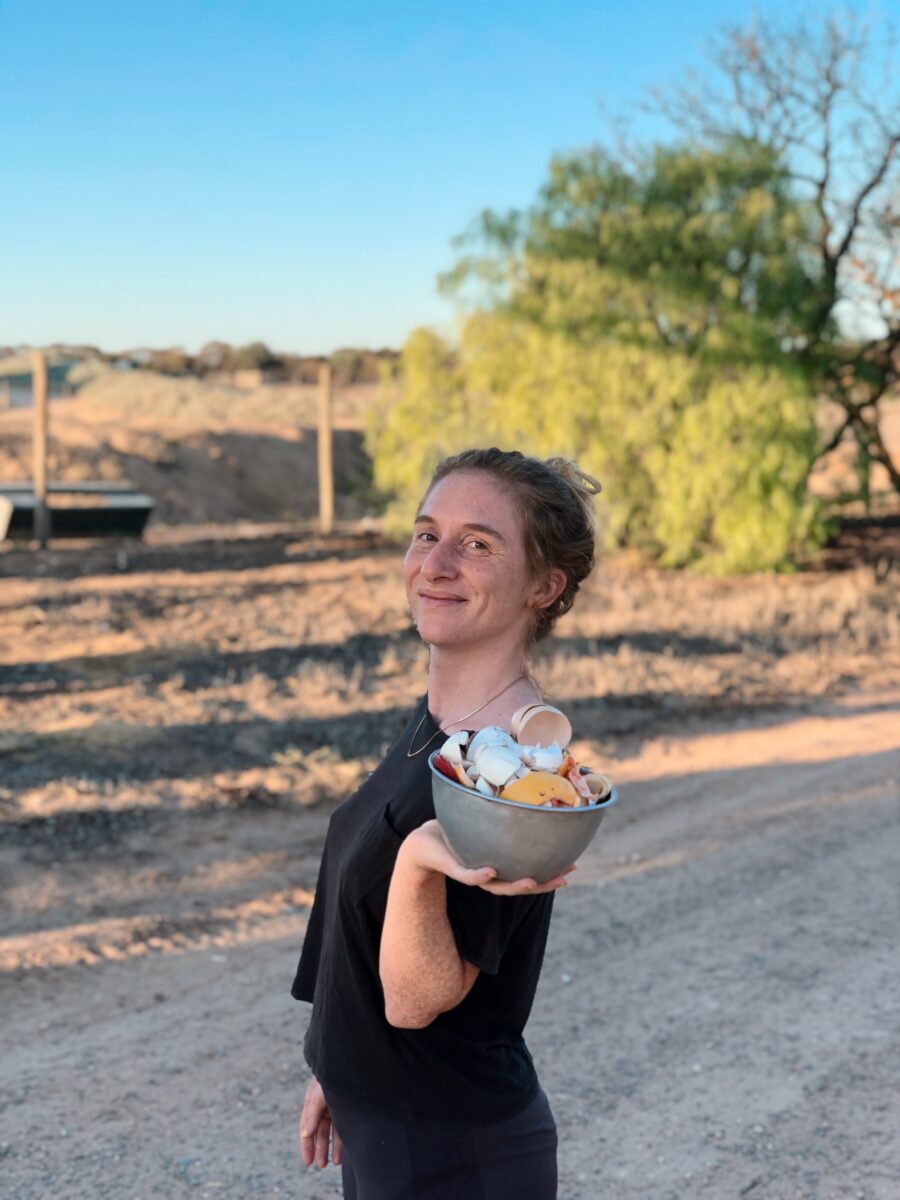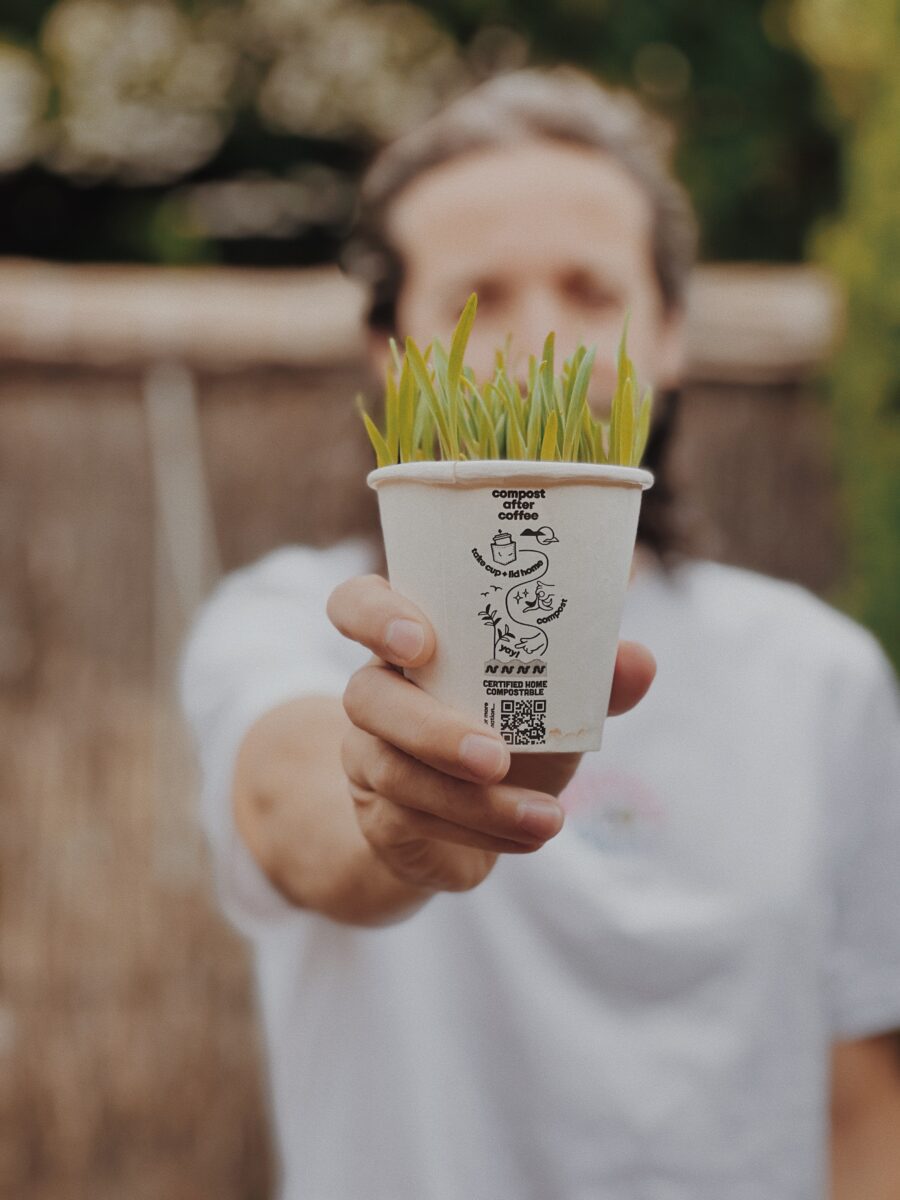How to Start Composting in 2025: Your Complete Guide to Backyard Composting
More and more Aussies are looking for practical ways to cut waste and fight climate change from home so start composting today! Composting is one of the easiest (and most satisfying!) ways to do just that. Whether you’re a seasoned gardener or a total beginner with a compost curiosity, this guide will walk you through how to start composting in 2025 – right in your backyard.
Why Composting?
Composting isn’t just for climate activists or country folk. It’s a powerful way to:
Cut your waste in half — Organic waste makes up ~40% of the average Aussie bin.
Turn food scraps into soil — No landfill. No methane. Just nutrient-rich compost.
Grow free food — Compost feeds your garden, which feeds you.
Close the loop — From bin to soil to veggies, back to plate.
Home composting is local climate action with immediate impact – and yes, it feels good. What are you waiting for to start composting Today ? 🙂
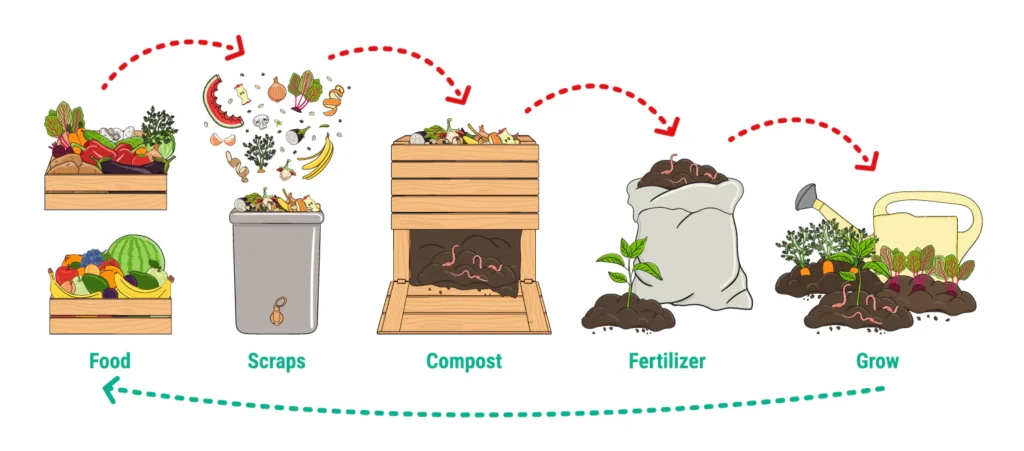
How to Start Composting as a Beginner
If you’re new to composting, here’s a step-by-step guide:
Pick your method (see options below).
Choose a compost bin that fits your space and lifestyle.
Set it up in a well-drained, shady spot or balcony if you’re tight on space.
Feed it with the right mix of green (nitrogen) and brown (carbon) materials.
Keep it moist and aerated — that’s it.
You don’t need fancy gear. You don’t need a green thumb. Just consistency, some space, and a bit of patience. It will be rewarding I promise! Check out my first compost bins when I was just starting out. It only gets better with time!
Choosing the Right Bin or Setup
1. Hot Composting – The Classic Approach
Fast and efficient to start composting. Requires regular turning and the right balance of materials (moisture, air, carbon:nitrogen). Ideal for gardeners who want quick results and don’t mind getting involved.
2. Cold Composting – The Easygoing Method
Takes longer, but minimal effort. You just pile scraps and wait. Might attract pests if not managed, but great if you’re time-poor and not in a rush.
3. Vermicomposting – The Worm-Powered Method
Uses red wiggler worms to break down food scraps into nutrient-rich castings. Space-friendly and great for indoor or small-space composting.
4. Compost Tumblers – Convenient and Quick
Compost tumblers are designed to make composting simpler and faster by facilitating easy turning and aeration of the compost material. These containers are great for small spaces and can speed up the composting process, though they might require some maintenance and can be a bit of an investment.
5. Bokashi Composting – The Anaerobic Alternative
Bokashi composting is unique because it ferments organic waste in an anaerobic environment, allowing you to compost materials that are typically not recommended for traditional composting, like meat and dairy. This method is quick, odourless, and suitable for small spaces, including apartments.
6. Direct Burial – The Ultimate Lazy Method
Perhaps the simplest method of all to start composting, also known as trench composting, involves burying organic waste directly into the soil to decompose (45cm underground). This method is a simple and effective way to enrich soil and reduce waste, particularly for materials that might attract pests in a traditional compost bin, like meat, dairy, and cooked food scraps. This technique goes well with an indoor bokashi bin.
7. In-Garden Composting – The Fun Systems
An in-garden composting system, like the Aussie-made CoolSeats or the US-made Subpod, is a neat and natural way to turn your food scraps into nutrient-rich compost, right where your veggies grow. Whether it’s a bin, a heap, or an in-ground setup, these systems rely on worms and microbes to do the heavy lifting. They enrich the soil below and can be placed directly in your garden, moved around as needed, or even set up on a path, just like a mini raised bed!
Curious about Coolseats? We’ve got 3 vouchers of $100 to grab. Head to this page and mention Compostable alt.! A Coolseats also means 80% less watering and watering time, perfect for South Australia’s weather!
What to Put in Your Compost Bin to start composting
It’s all about balance. You want a healthy mix of:
Greens (Nitrogen-rich):
- Fruit and veggie scraps
- Coffee grounds
- Tea leaves
- Fresh grass clippings
Browns (Carbon-rich):
- Dry leaves, twigs, cardboard (including all our cardboard food packaging)
- Shredded paper and newspaper
- Certified home compostable coffee cups and lids (like ours — AS 5810 certified)
- Paper towel, napkins and tissues
Aim for 1 part green to 2 parts brown. Too much green = smelly. Too much brown = slow breakdown. Our home compostable cups will help keep the balance right.
Seasonal Composting Tips
Composting can be a bit seasonal. Here’s what to keep in mind:
Summer: Decomposes faster. Watch out for dryness, add water if needed.
Winter: Slows down. Try insulating the pile with straw or a tarp.
Rainy weather: Can make compost soggy. Cover your pile or move bins under shelter.
Dry spells: Keep moisture levels like a wrung-out sponge. Add water when it gets dusty or hard.
Community Composting Options (If You Can’t Compost at Home)
No yard? No worries.
Use apps like Peels (new Share Waste!) to find neighbours that compost near you.
Join or start a compost hub at your local community garden to start composting.
Ask your neighbour, maybe they have a compost bin and would welcome your scraps.
Contact your council, some offer composting programs, workshops or rebates on compost bins. You can also check the Compost Revolution website!
Troubleshooting Your Compost Pile
If things go sideways (don’t worry, it happens), here’s how to course-correct:
| Problem | Cause | Fix |
|---|---|---|
| It smells bad (like rot) | Too much green / not enough air | Add more browns, turn the pile |
| Attracting flies or ants | Exposed food scraps | Bury fresh scraps under browns |
| Compost is dry and not breaking down | Too dry | Add water and mix |
| Wet, slimy mess | Too many wet greens | Mix in shredded cardboard or dry leaves |
| Not breaking down at all | Wrong ratio or not enough air | Add more greens and mix it up |
Tips to Keep Your Compost Healthy
Chop food scraps smaller: faster breakdown.
Alternate layers of greens and browns especially when you start composting.
Add oxygen: turn every week especially if hot composting.
Use a bin with a lid: keeps moisture in and pests and weather out.
Balance your bin: don’t just dump in fruit scraps or leaves alone.
How Do You Know Your Compost Is Ready?
Your compost is done when:
Cured compost looks like rich, dark soil
It smells earthy (not sour)
You can’t see recognisable food scraps (except those pesky plastic fruit stickers!)
It’s crumbly and moist to the touch
If in doubt, let it cure for another few weeks and give it a final mix.
What to Do With Finished Compost
Now the good stuff ! Your compost is ready to give back:
Feed your veggie patch or herb garden
Mix it into potting mix for houseplants
Top-dress your lawn or garden beds
Gift it to a neighbour or local garden
Add it to fruit trees or native plants — they love it
Composting FAQs
Can I compost citrus or onions?
Yes in moderation. Worms don’t love it, but they’ll deal.
Can I compost bread or pasta?
You can, but sparingly. It can attract pests. Better in a hot compost setup.
Can I compost mouldy food?
Yes mould is part of the decomposition process.
What about compostable packaging?
All our packaging can be home composted as they are certified home compostable (AS 5810) like our cups and lids. Avoid “bioplastics” or anything labelled “commercially compostable.” Always look for the certification before chucking it into the compost!
Do I need worms in all compost?
Not always. Earth worms will naturally show up in outdoor bins. You only need to add red worms (different from earth worms!) if doing vermicomposting or worm farming.
Can I use my council green bin?
It depends, many councils do not accept compostable packaging in the green bin. Always check with your local council first!
Ready to Start Composting in 2025?
No more excuses. Starting your compost journey this year means less landfill, healthier soil, and more local resilience. Whether you’re composting in a garden, on a balcony, or through a local hub, there’s always a method that fits.
And if you’re already using our home compostable cups, you’re halfway there. They’re not just cups; they’re carbon-rich brown material ready to help build new soil.
So what are you waiting for? Start composting Today!
About the author:
Marion is a French Australian entrepreneur, profoundly interested in the composting industry. Her words are her own thoughts and come from her research and learning. Although she quotes and sources the information she shares, Marion is not a scientist or a researcher and her opinions should not be understood as a scientific truth.
Through her findings and experience in the industry, she is attempting to support hospitality businesses and producers in their search of alternative choices to single-use and other types of plastic packaging. You should always do your own research to best inform yourself.
Share this article :
Compost Club Blog
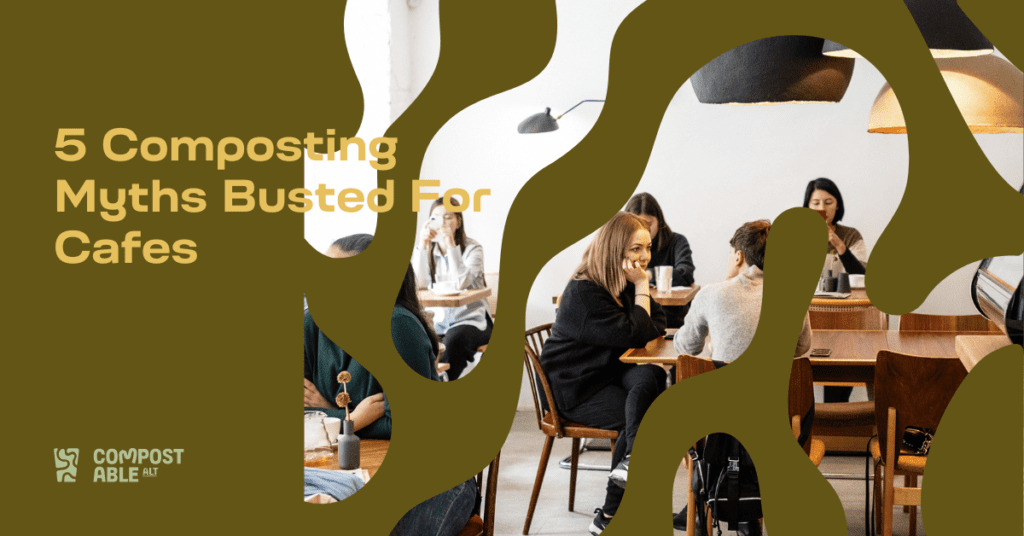
5 Coffee Takeaway Cup Composting Myths Busted for Cafes
Do you offer takeaway coffees? Let’s bust the 5 biggest coffee takeaway cup myths so you can make the right call for your business, your customers, and the planet.
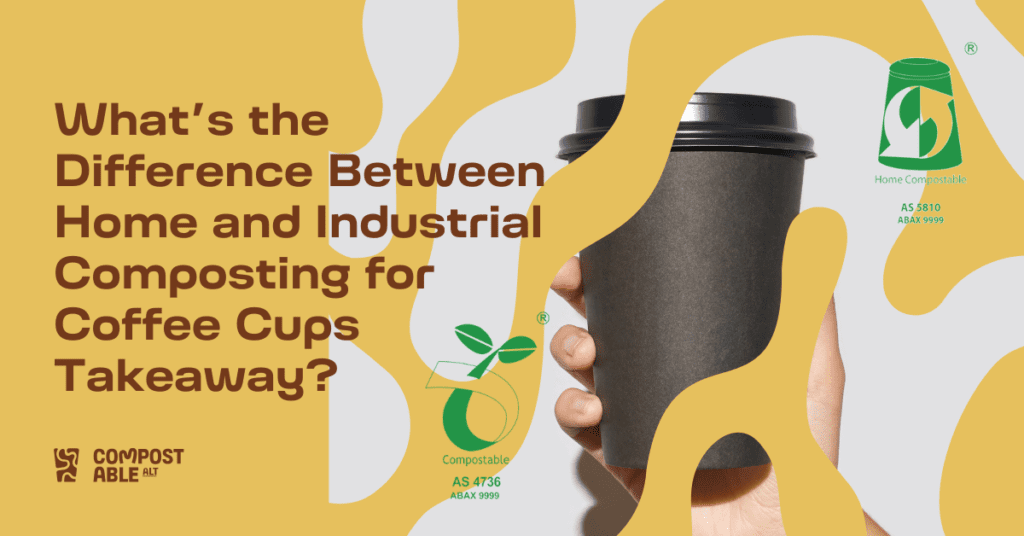
What’s the Difference Between Home and Industrial Composting for Coffee Cups Takeaway?
If you’re a café owner, a sustainability nerd, or just someone trying to do the right thing, knowing the difference between home and industrial composting is key to making better packaging decisions.
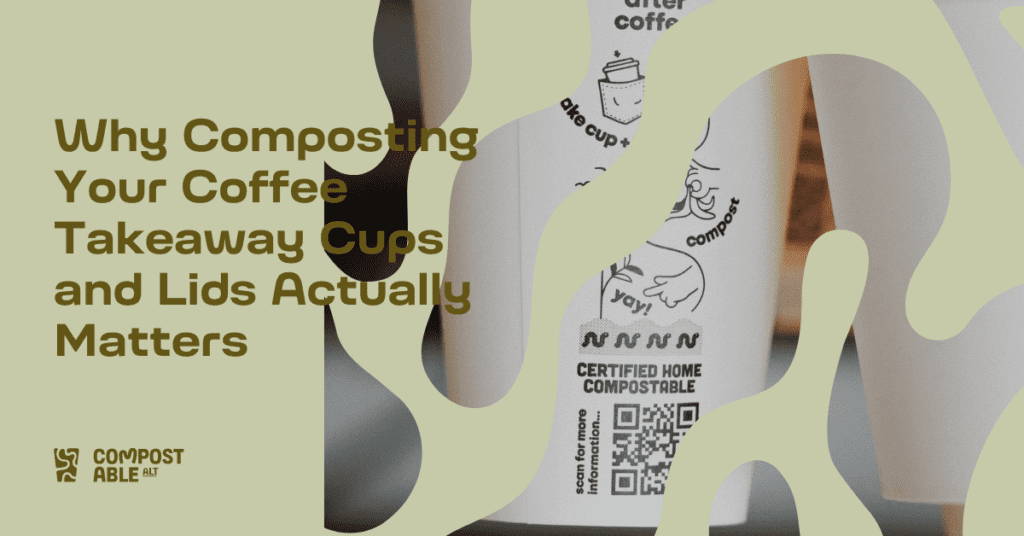
Why Composting Your Coffee Cups Takeaway Actually Matters
If you’re like most Aussies, coffee cups takeaway are part of your daily routine. Maybe it’s your morning long black from the local cafe or an arvo flat white on the go. But what happens after you’ve finished your drink?

